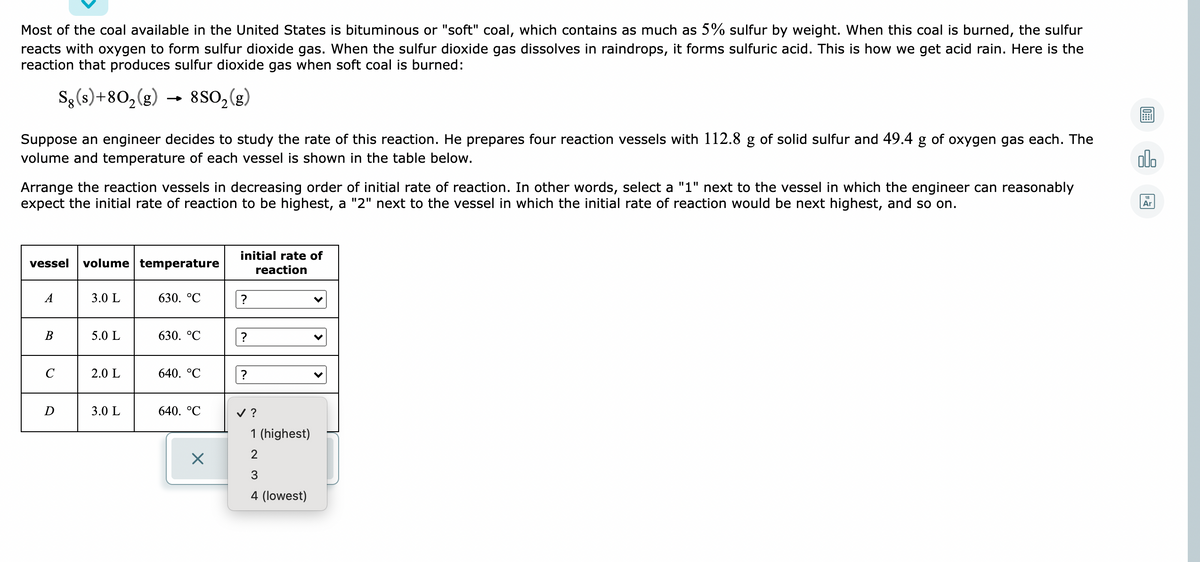Most of the coal available in the United States is bituminous or "soft" coal, which contains as much as 5% sulfur by weight. When this coal is burned, the sulfur reacts with oxygen to form sulfur dioxide gas. When the sulfur dioxide gas dissolves in raindrops, it forms sulfuric acid. This is how we get acid rain. Here is the reaction that produces sulfur dioxide gas when soft coal is burned: Sg (s)+80,(g) → 880,(g) Suppose an engineer decides to study the rate of this reaction. He prepares four reaction vessels with 112.8 g of solid sulfur and 49.4 g of oxygen gas each. The volume and temperature of each vessel is shown in the table below. olo Arrange the reaction vessels in decreasing order of initial rate of reaction. In other words, select a "1" next to the vessel in which the engineer can reasonably expect the initial rate of reaction to be highest, a "2" next to the vessel in which the initial rate of reaction would be next highest, and so on. initial rate of vessel volume temperature reaction 3.0 L 630. °C ? B 5.0 L 630. °C C 2.0 L 640, °C ? D 3.0 L 640. °C v ? 1 (highest) 2 3 4 (lowest)
Thermochemistry
Thermochemistry can be considered as a branch of thermodynamics that deals with the connections between warmth, work, and various types of energy, formed because of different synthetic and actual cycles. Thermochemistry describes the energy changes that occur as a result of reactions or chemical changes in a substance.
Exergonic Reaction
The term exergonic is derived from the Greek word in which ‘ergon’ means work and exergonic means ‘work outside’. Exergonic reactions releases work energy. Exergonic reactions are different from exothermic reactions, the one that releases only heat energy during the course of the reaction. So, exothermic reaction is one type of exergonic reaction. Exergonic reaction releases work energy in different forms like heat, light or sound. For example, a glow stick releases light making that an exergonic reaction and not an exothermic reaction since no heat is released. Even endothermic reactions at very high temperature are exergonic.

Mass of reactant is kept constant. So, initial rate of reaction depends on volume and temperature.
Trending now
This is a popular solution!
Step by step
Solved in 3 steps









